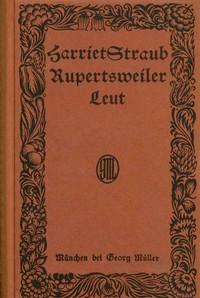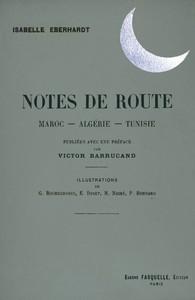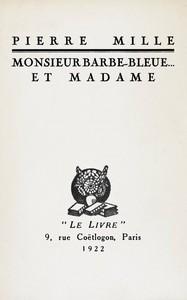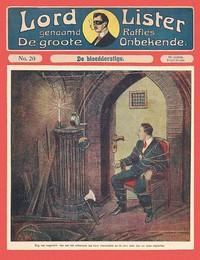|
|
Read this ebook for free! No credit card needed, absolutely nothing to pay.Words: 11153 in 3 pages
This is an ebook sharing website. You can read the uploaded ebooks for free here. No credit cards needed, nothing to pay. If you want to own a digital copy of the ebook, or want to read offline with your favorite ebook-reader, then you can choose to buy and download the ebook. THE JUMANO INDIANS BY FREDERICK WEBB HODGE REPRINTED FROM PROCEEDINGS OF THE AMERICAN ANTIQUARIAN SOCIETY AT THE SEMI-ANNUAL MEETING, APRIL, 1910. THE JUMANO INDIANS. In studying the history and the effect of the contact of the Southwestern Indians with civilization, the writer was baffled by what appeared to be the sudden and almost complete disappearance of a populous tribe which played a rather prominent part in the history of the early exploration and colonization of the Southwest, which occupied villages of a more or less permanent character, and among whom missionaries labored in fruitless endeavor to show them the way to Christianity. It is not usually difficult to account for the decimation or even for the extinction of a tribe ravaged by war or by epidemics, of which there are numerous instances; but of the Jumano Indians, of whom this paper treats, there is no evidence that they were especially warlike in character, that they had a greater number of enemies than the average tribe, or that they had suffered unusually the inroads of disease. The Jumano were first visited by Alvar Nu?ez Cabeza de Vaca and his three companions of the ill-fated Narvaez expedition, while making their marvelous journey across Texas and Chihuahua in 1535. The name of the tribe is not given by them: they are called merely the "Cow Nation"; but the relation of an expedition nearly half a century later makes it evident that no other people could have been meant. The narration of Cabeza de Vaca is so indefinite that from it alone it would be difficult even to locate the place where the Jumano were found; but the testimony, meager though it be, tends to indicate that in 1535, as in 1582, they lived on the Rio Grande about the junction of the Rio Conchos and northward in the present state of Chihuahua, Mexico. The first Jumano seen by Cabeza de Vaca was a woman, a captive among an unknown tribe, members of which were guiding the forlorn Spaniards across the desolate and broken country toward the west in southwestern Texas. Reaching the Rio Grande, Castillo and the negro Estevanico, who had journeyed ahead, came to a town at which the captive woman's father lived, "and these habitations were the first seen, having the appearance and structure of houses." The inhabitants subsisted on beans and squashes, and the Spaniards also had seen maize. Besides food, the natives gave the white men buffalo-robes--seemingly the first of their sort mentioned in history. The Indians came in numbers and took the Spaniards "to the settled habitations of others, who lived upon the same food." It may, I think, be assumed that these other habitations were those of other Jumano, although Cabeza de Vaca mentions that from the second settlement of houses onward was another usage. "Those who knew of our approach," he says, "did not come out to receive us on the road as the others had done, but we found them in their houses, and they had made others for our reception. They were all seated with their faces turned to the wall, their heads down, the hair brought before their eyes, and their property placed in a heap in the middle of the house. From this place they began to give us many blankets of skin; and they had nothing they did not bestow. They have the finest persons of any people we saw," he continues, "of the greatest activity and strength, who best understood us and intelligently answered our inquiries. We called them the Cow Nation, because most of the cattle killed are slaughtered in their neighborhood, and along up that river for more than fifty leagues they destroy great numbers." The narrator continues: "They go entirely naked after the manner of the first we saw. The women are dressed with deer-skin, and some few men, mostly the aged, who are incapable of fighting. The country is very populous. We asked how it was they did not plant maize. They answered it was that they might not lose what they should put in the ground; that the rains had failed for two years in succession, and the seasons were so dry the seed had everywhere been taken by the moles, and they could not venture to plant again until after water had fallen copiously. They begged us to tell the sky to rain, and to pray for it, and we said we would do so." We dwell thus at length on Cabeza de Vaca's account, as it is the first reference to the Jumano in history, and because it affords the earliest information as to what manner of people they were. There are few Indian tribes, whose history forms part of that of our own land, that have a record traceable to the first half of the sixteenth century. The next Spaniards to pass through the Jumano country were Francisco Sanchez Chamuscado and his party in company with three missionaries, in 1581; but no new light is thrown on the tribe in question, and indeed there is no definite evidence in the account of two of the soldiers who were members of the little party that they were seen at all, although the Rio Grande was followed northward from its junction with the Conchos. Much more definite information, however, is afforded by the next Spaniards to traverse their territory, led by Antonio de Espejo, who, in November, 1582, set out from San Bartolom?, in Chihuahua, and followed the bank of the Rio Grande northward from the mouth of the Conchos. From about the junction onward for twelve days' journey Espejo was among these people, who, he says, occupied five villages with an aggregate population of ten thousand--perhaps four-fold the actual number, as Espejo's estimates are always greatly exaggerated. The Jumano did not at first receive the strangers with the same friendliness as was shown Cabeza de Vaca and his companions, although it might be said that the latter met with a reception, owing to the magic power that they were supposed to possess and the awe inspired by it, such as perhaps has never been experienced by white men since their time. Espejo gives a rather definite account of the Indians under discussion, who, it will be observed, occupied the valley of the Rio Grande from the Conchos northward almost to the boundary of the present New Mexico. He says they were called Jumanos, and by the Spaniards Patarabueyes. Some of their houses were terraced, while others were of straw. The faces of the Indians were striated, evidently meaning tattooed, as the sequel will show. They cultivated maize, calabashes, and beans; hunted animals and birds, and especially the buffalo, and caught fish of many kinds in the two streams that united within their territory. They had lakes within their domain, from which they obtained salt during certain seasons as good as that from the sea. Of special importance in the identification of the people met by Cabeza de Vaca, Espejo states that three Christians and a negro had passed through the Jumano country years before, in whom he naturally recognized "Alvaro Nu?ez Cabeza de Vaca, y Dorantes, y Castillo Maldonado, y un negro," who, as is well known, finally reached Culiacan and the City of Mexico after trials and suffering almost beyond belief. Free books android app tbrJar TBR JAR Read Free books online gutenberg More posts by @FreeBooks
: Rupertsweiler Leut by Straub Harriet - Country life Fiction; Women Fiction; Black Forest (Germany) Fiction@FreeBooksThu 08 Jun, 2023

: Notes de route by Eberhardt Isabelle Barrucand Victor Editor Dinet Etienne Illustrator Noir Maxime Illustrator Rochegrosse Georges Illustrator - Africa North Description and travel; Morocco Description and travel; Tunisia Description and travel; Algeria De@FreeBooksThu 08 Jun, 2023
|
Terms of Use Stock Market News! © gutenberg.org.in2025 All Rights reserved.






